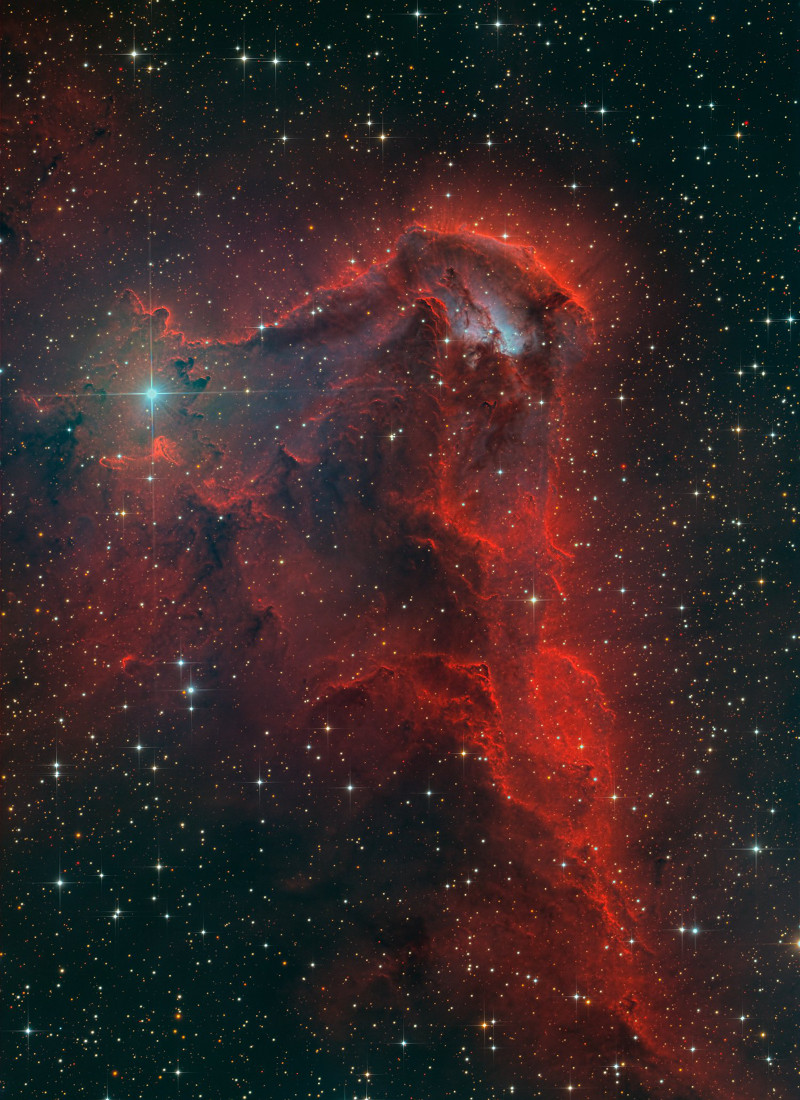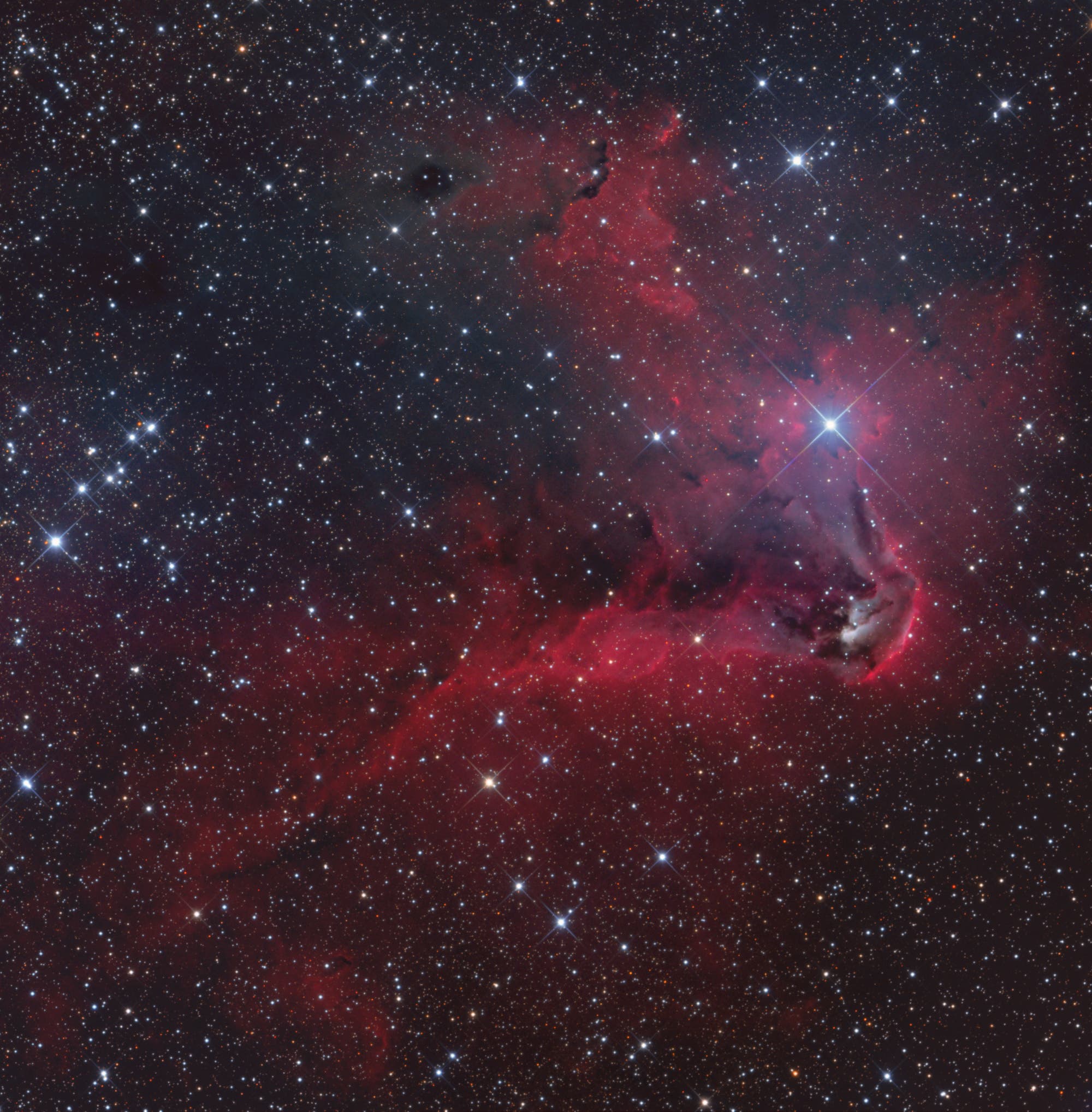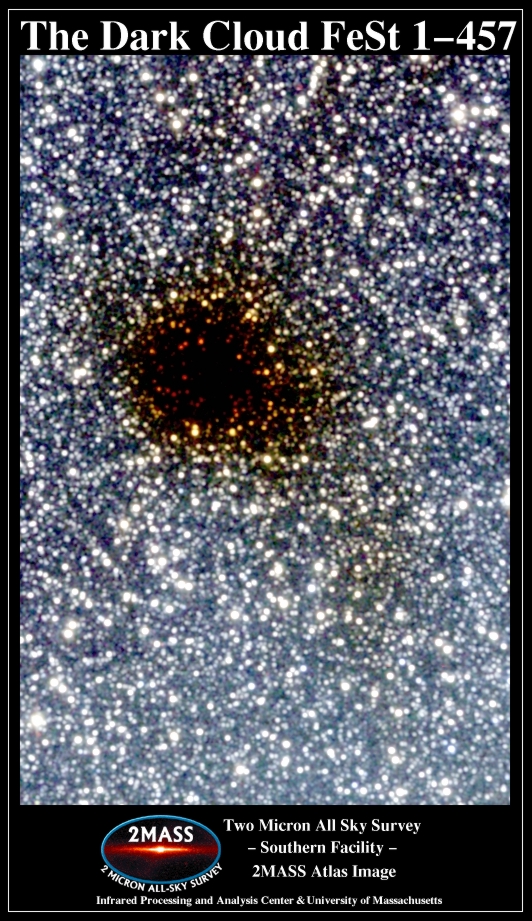This is a mysterious picture.
RCW is a region of star formation, and you can easily see where the baby stars are located. Their pale bluish light peeks through an opening in the molecular cloud at upper right in the APOD.
But what is that bright star (at left) doing there???
That star looks like it is a part of the nebulosity. Note that it appears to be located in a cavity in the molecular cloud, which is what we expect from hot massive stars. Also note that the area around the star appears to be brighter than the "tunnel" to the right of it, as if the light of the stars was lighting up its surroundings.
And yet, it also looks as if the star does not belong there. Considering how bright it looks compared with the molecular cloud, it doesn't affect its surroundings as much as it should if it was a hot bright star located inside the nebulosity.
Consider NGC 2264, a region of star formation which has spawned one very hot bright star, 15 Mon, and see how much it is affecting its surroundings:
NGC 2264 with bright star 15 Mon. Credit: Bach Zoltan.
Note the cavity that 15 Mon has carved around itself. Also note all the gaseous structures pointing at 15 Mon: There is the Cone Nebula at left, a bright red arc at right and the Fox Fur Nebula below 15 Mon. Also note all the other, less massive stars that are found in the vicinity of 15 Mon.
The bright star in the molecular cloud of RCW 85 is located in what might be described as "a sort of cavity". But the nebulosity around it appears to be mostly unaffected by the star. Yes, there is a smallish red "pillar" to the lower right of it, but this pillar does not stand out compared with all the other nebular structures. The molecular cloud as a whole does not seem to pay much attention to the presence of that star. Also the star is "lonely" and not surrounded by any "cluster siblings".
I checked the star, HD 125158, with
Simbad. It turns out that HD 125158 is a modest star of spectral class A5 or A7, an Altair if you will, at a well-defined Gaia distance of some 150 light-years and a luminosity of some 14 times solar. There is no way that such a modest star can strongly affect a large molecular cloud like RCW 85! Especially since the distance to RCW 85 is more like some 6,000 light-years!!!
Case closed, right? Not quite. Because there are other pictures where the star, HD 125158, looks for all the world as if it was really involved with the nebulosity of RCW 85. Take a look at this gorgeous image by Mark Hanson:
RCW 85 and HD 125158. Credit: Mark Hanson.
Just look at all the tattered nebulosity surrounding the star in Mark Hanson's picture! It looks for all the world as if HD 125158 belonged inside an extension of the molecular cloud of RCW 85, and yet that's impossible! I'm stumped.
An interesting feature of RCW 85 is its bright and very well-defined rim:
Such a bright rim of a molecular cloud must be sculpted by a hot bright star not too far from the cloud. And Mark Hanson has identified the star responsible for sculpting the rim:
Ann
 RCW 85
RCW 85






